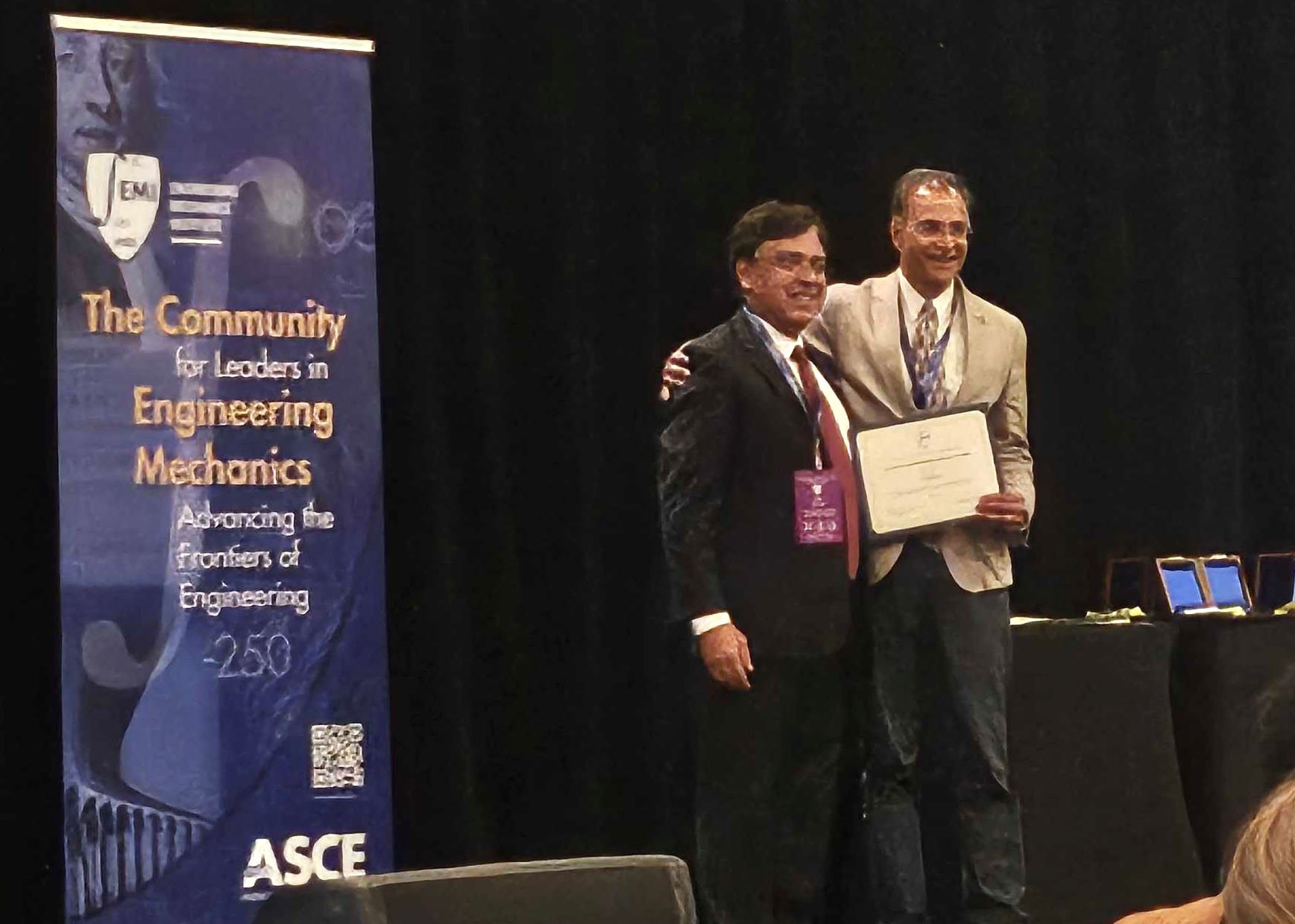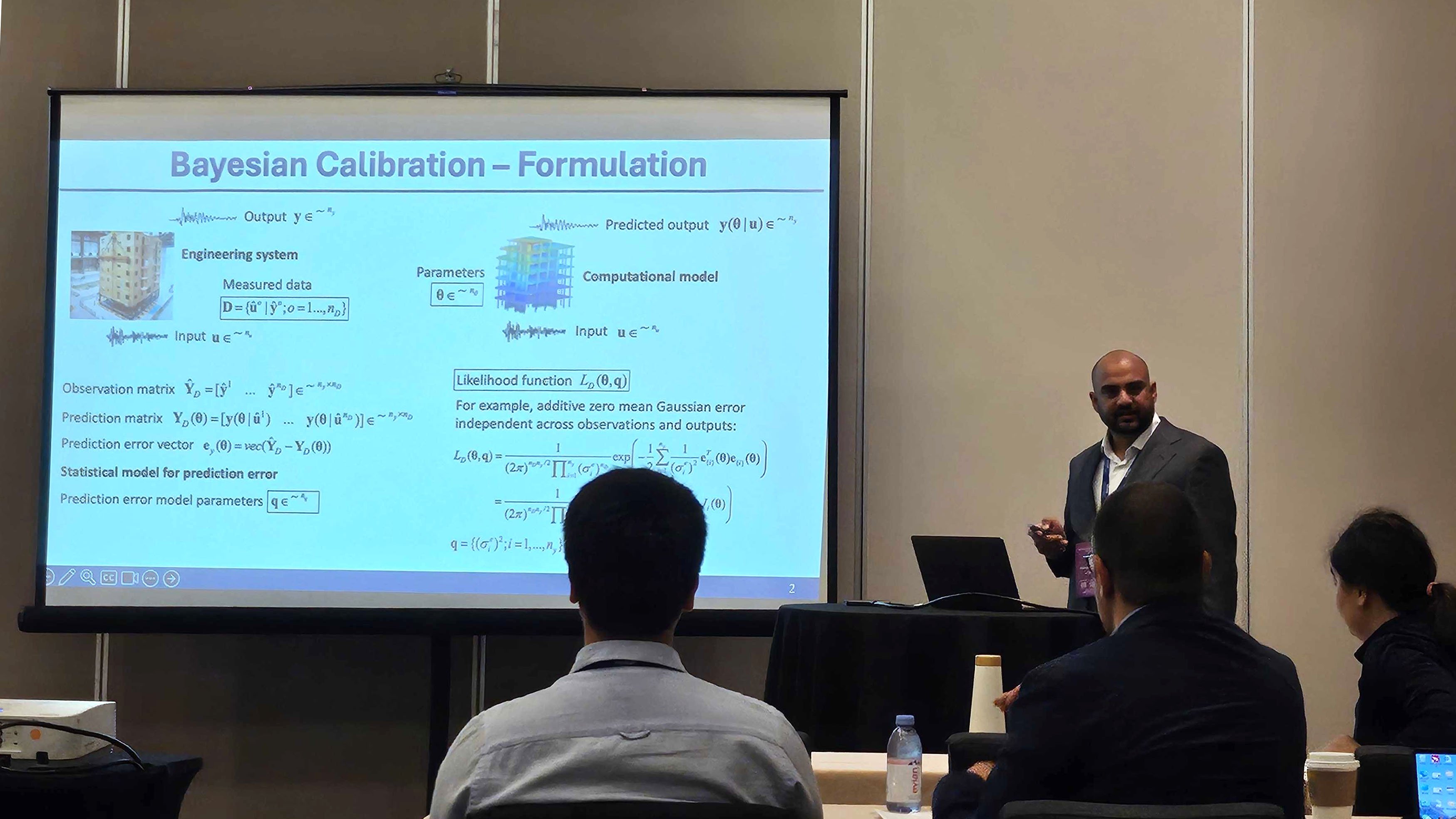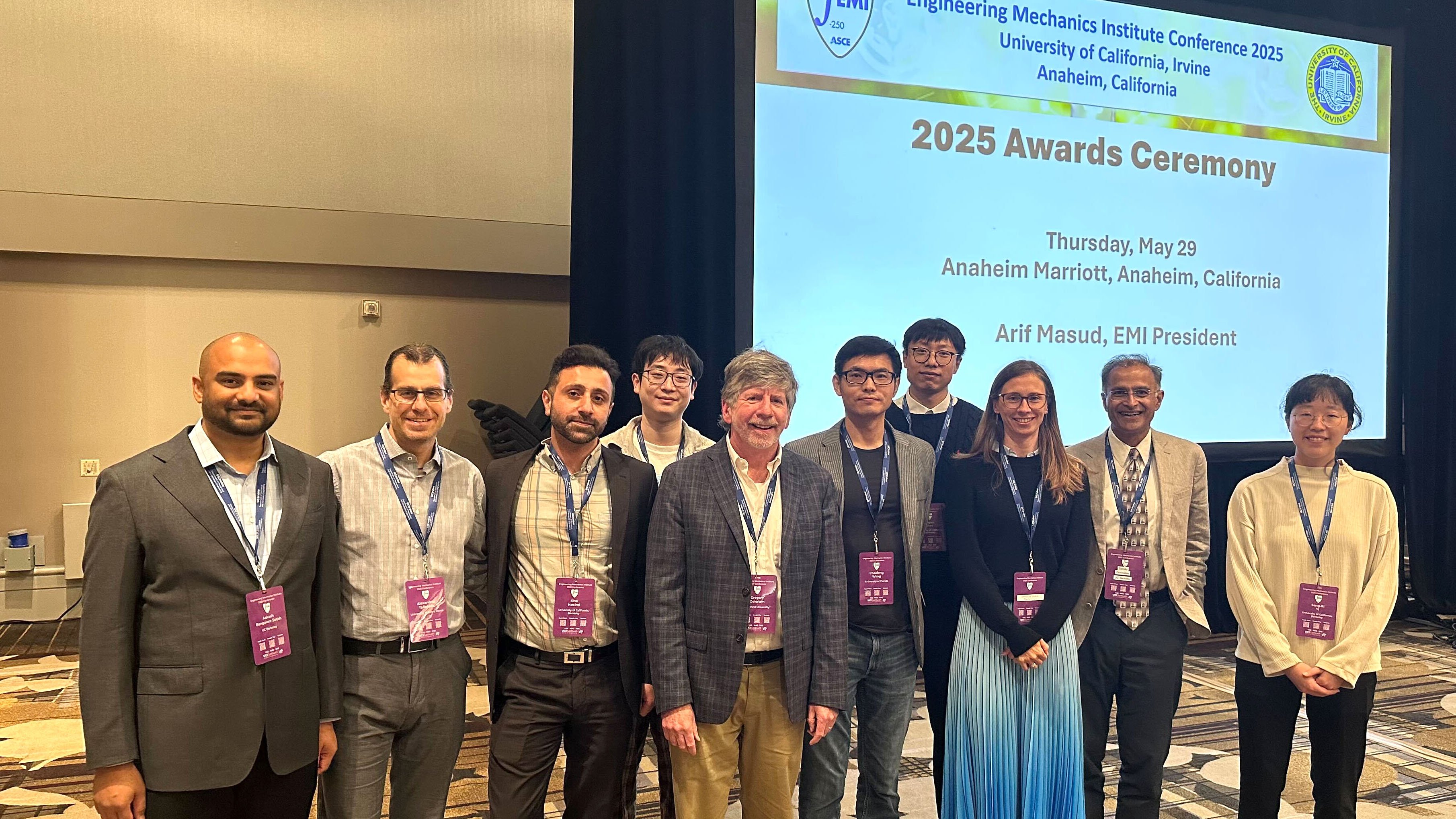 Sanjay Govindjee honored as an EMI Fellow (Photo credit: Sang-ri Yi/NHERI SimCenter/UC Berkeley)
Sanjay Govindjee honored as an EMI Fellow (Photo credit: Sang-ri Yi/NHERI SimCenter/UC Berkeley) Aakash Bangalore Satish presents at EMI (Photo credit: Sang-ri Yi)
Aakash Bangalore Satish presents at EMI (Photo credit: Sang-ri Yi)
 SimCenter personnel and colleagues at EMI
SimCenter personnel and colleagues at EMISimCenter researchers participated in ASCE’s Engineering Mechanics Institute (EMI) conference “Mechanics for a Sustainable Future,” on May 27-30, 2025, in Anaheim, California. Hosted by the University of California, Irvine, the conference offered an engaging forum for researchers and practitioners to showcase recent fundamental and applied contributions to engineering mechanics and its related fields to address existing and emerging engineering and societal issues.
Sanjay Govindjee, former PI of the SimCenter, and the Horace, Dorothy, and Katherine Johnson Professor in Engineering at UC Berkeley, was honored as a 2025 EMI Fellow during the awards ceremony.
The following presentations showcased features of SimCenter software tools. Participating SimCenter personnel, including domain experts, are noted in italics, and presenters are noted with *.
Objective Resilience: Multi-Hazard Socio-Physical Community Resilience Quantification:
“An integrated regional resilience assessment computation platform with system-level lifeline infrastructure serviceability and recovery simulations.” Nikola Blagojevic, Jinyan Zhao*, Sina Naeimi. SimCenter’s R2D software tool, integrated with the pyrecodes open-source tool, enable regional assessments with recovery simulations that can capture the interdependent flow of resources. Two simulators are included in R2D to analyze highway transportation and water distribution networks.
Advancing Autonomous Inspection and Hazard Resilience in Transportation Infrastructure:
“An End-to-End Framework for Assessing System-Wide Performance of Transportation Networks.” Barbaros Cetiner*, Jinyan Zhao, Frank McKenna, Ertugrul Taciroglu. The end-to-end framework featured the use of SimCenter’s BRAILS++ and R2D tools.
Structural Identification and Damage Detection:
“Adaptive Gaussian Process Surrogates for Accelerating Bayesian Calibration of Complex Numerical Models.” Alexandros Taflanidis, Aakash Bangalore Satish*, Sang-ri Yi, Joel Conte. This adaptive process improves computational efficiency and is implemented in SimCenter’s quoFEM tool, which is integral to all of SimCenter’s research applications.
Advances in Regional Seismic Ground Motion Modeling and Simulation:
“Smart sampling and variance reduction methods for efficient regional seismic risk analysis.” Jinyan Zhao*, Sang-ri Yi, Alexandros Taflanidis. Regional vulnerability analyses are computationally intensive, and the proposed methods overcome limitations by using adaptive importance sampling techniques that can be generated using SimCenter’s R2D tool.
Uncertainty Quantification approaches for computationally efficient hazard/vulnerability assessment:
“Probabilistic Imputation of Building Inventories for Regional Risk Assessment.” Sang-ri Yi*, Adam Zsarnoczay, Aakash Bangalore Satish, Dimitrios Giovanis, Barbaros Cetiner, Frank McKenna, Ertugrul Taciroglu. This probabilistic imputation approach is currently implemented in SimCenter’s Brails++.